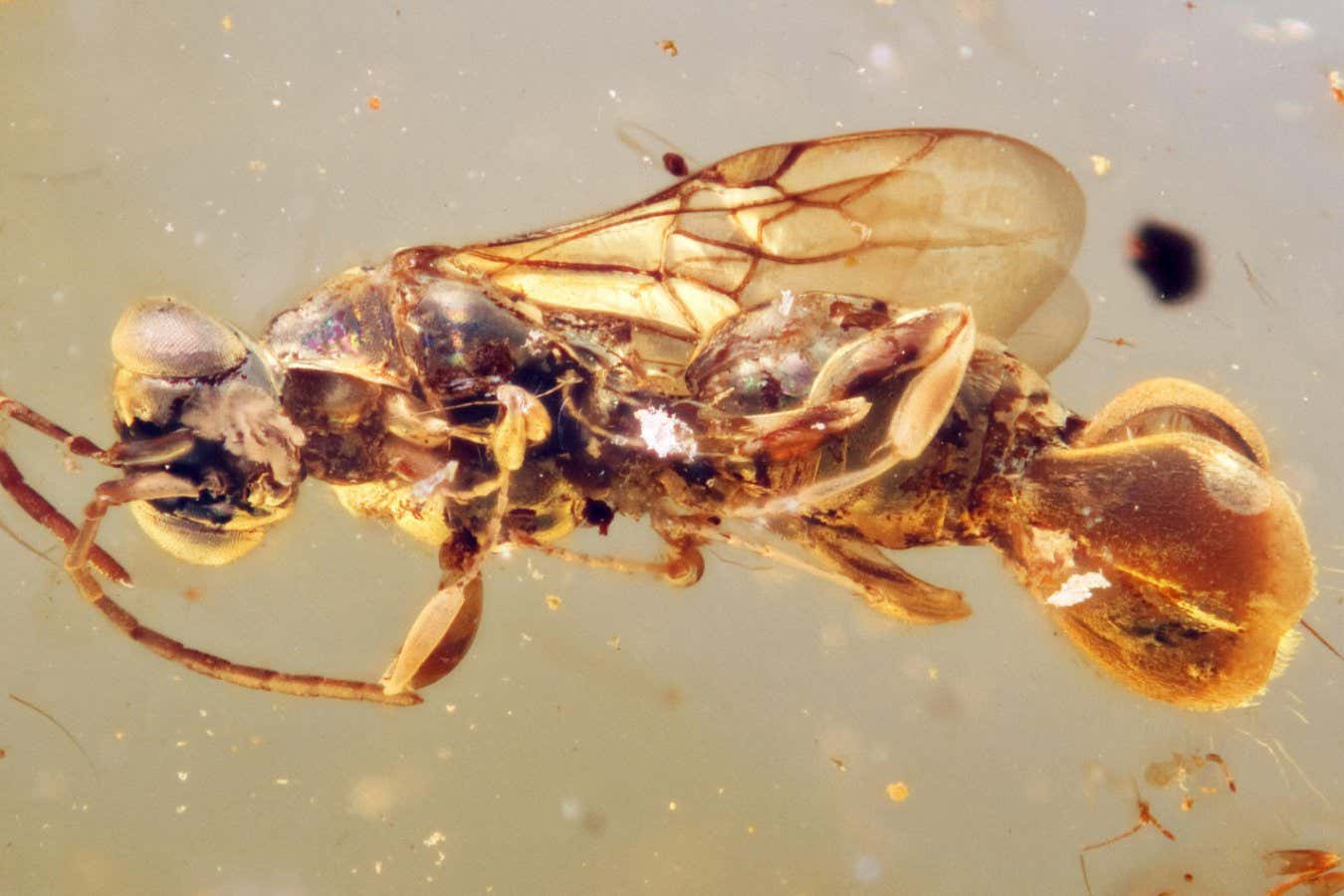Bizarre parasitic wasps preserved in amber about 99 million years ago had trap-like abdomens that they may have used to immobilise other insects
By Chris Simms
27 March 2025
A specimen of Sirenobethylus charybdis preserved in amber
Qiong Wu
An extraordinary extinct wasp found preserved in amber may have used its abdomen to grasp other insects like a Venus flytrap before laying its eggs on them.
“It’s unlike anything I’ve ever seen before. It’s unlike any wasp or any other insect that is known today,” says Lars Vilhelmsen at the Natural History Museum of Denmark.
Read more
Oldest rocks on Earth may contain strange and ancient life forms
Advertisement
Vilhelmsen and his colleagues have named the wasp Sirenobethylus charybdis after Charybdis, a sea monster in Homer’s epic poem The Odyssey. The insect lived almost 99 million years ago in the Cretaceous period.
The researchers used micro-CT scanning, an X-ray imaging technique, to examine 16 female wasps that were encased in amber found in the Kachin region of Myanmar.
All the wasps had three flaps in their abdomens, making up a clasping structure. It was preserved in different positions, sometimes open and sometimes partly closed, suggesting it was a movable, grasping device when the insects were alive.
